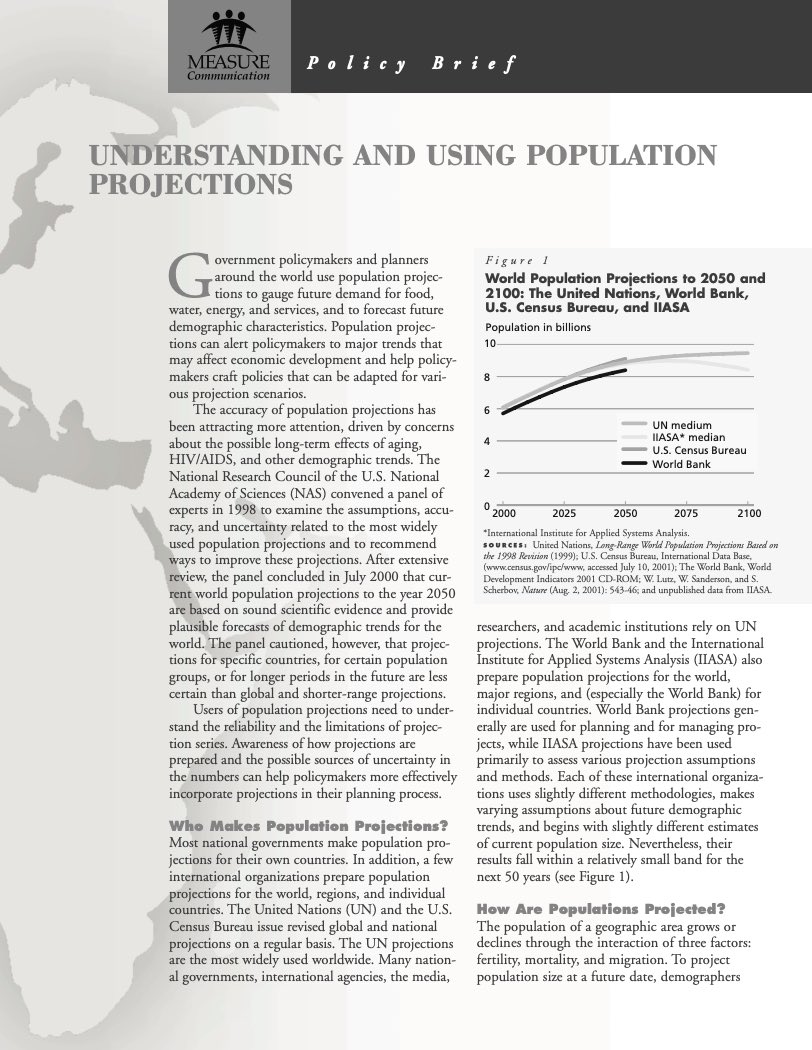563 Search Results Found For : "www.nubobeauty.com"
Gender and Equity in Access to Health Care Services in the Middle East and North Africa
(2006)The Middle East and North Africa (MENA) region has experienced major improvements in health over the past few decades.1 Today, on average, a girl born in Egypt is expected to live for 72 years—nearly 20 years longer than if she had been born in the early 1970s—owing in large part to a 70 percent improvement in infant mortality rates over the same time period.
El Salvador Survey Shows Lower Fertility, Increased Contraceptive Use
(2010) Women of childbearing age in El Salvador are having fewer children and using more family planning, with a recent increase in the use of injectable contraceptives.

Continuity and Change in the U.S. Decennial Census
The first nation in the world to take a regular population census, the United States has been counting its population every 10 years since 1790—as required by the U.S. Constitution (Article I, Section 2).

Policy Brief: Understanding and Using Population Projections
Government policymakers and planners around the world use population projections to gauge future demand for food, water, energy, and services, and to forecast future demographic characteristics.
PRB Discuss Online: Americans at Work, What Lies Ahead?
(2008) The aging of baby boomers and the fact that women's labor force participation has already peaked are expected to slow U.S. labor force growth in the near future.
Without My Consent — Women and HIV-Related Stigma in India
(2003) Both are voices of women in Delhi, but they could be from anywhere in this country of 1 billion people.

Population Bulletin, vol. 63, no. 1: Managing Migration–The Global Challenge
(March 2008) The number of international migrants is at an all-time high. There were 191 million migrants in 2005, which means that 3 percent of the world's people left their country of birth or citizenship for a year or more.
